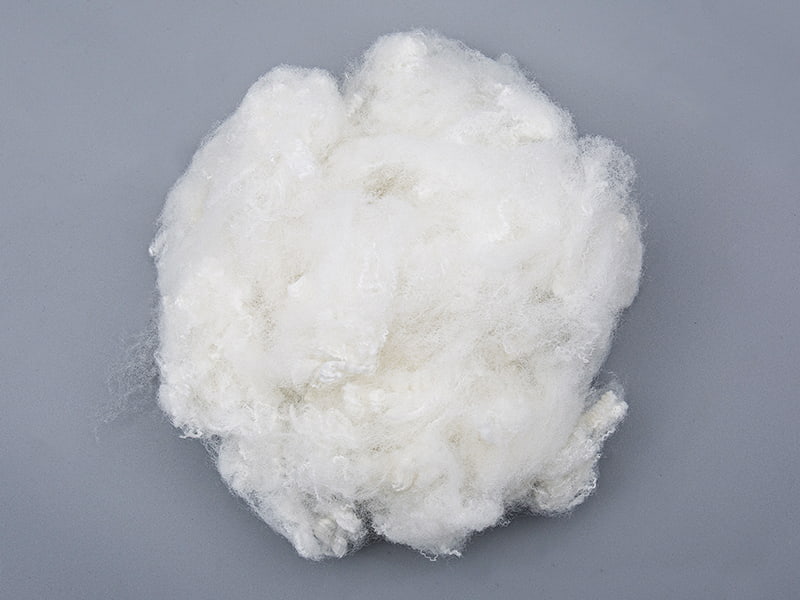 2025.06.26
2025.06.26
 Industry Information
Industry Information
Nonwoven material The biggest feature that distinguishes it from traditional textiles is that it is directly composed of fibers and does not require a spinning and weaving process. This special structure imparts extremely high porosity and uniform pore size distribution to the material, allowing it to exhibit excellent performance in filtration applications. By precisely controlling the fiber arrangement density and diameter, filter materials with different precisions from micron to nanoscale can be produced to meet all kinds of needs from air purification to liquid filtration.
The designability of the material is another significant advantage. Nonwoven material can flexibly adjust thickness, weight, fiber composition and structural form according to specific application needs. This customization capability allows it to be optimized for specific pollutants or protection requirements, enabling performance combinations that are difficult to achieve in traditional materials. From ultra-thin medical protection to heavy industrial filtration, nonwoven technology provides accurate solutions.

In the field of filtration, nonwoven material has achieved a qualitative leap in efficiency through structural innovation. The multi-layer composite design can simultaneously realize pre-filtration, fine filtration and protection functions, greatly improving the performance of the overall filtration system. The design of the gradient pore structure allows the material to capture particles of different particle sizes in graded, which not only ensures filtration efficiency but also extends service life.
The application of electrostatic electret technology is another important breakthrough. By imparting the fibers to last static electricity, nonwoven material can capture submicron-scale particles with lower resistance, which is particularly important in the field of air filtration. This technology enables filter materials to maintain high breathability while significantly improving the interception efficiency of tiny particulate matter, providing an ideal choice for high-end applications such as clean rooms and medical care.
Innovations in the field of protection are also eye-catching. Modern nonwoven material realizes multifunctional integrated protection through material composite and surface treatment technology. Single-layer materials can have both liquid barriers, bacterial filtration and comfortable breathability, which is particularly important in medical protective products. The application of special coating technology further expands the protection range, allowing the material to resist various risks such as chemical splashing and blood penetration.
The balance of breathability and protection is the core breakthrough of nonwoven technology. Traditional protective materials often face the dilemma of "the stronger the protection, the worse the comfort", and nonwoven material achieves the best balance between the two by precisely controlling the aperture and surface characteristics. This breakthrough allows protective equipment to be worn for a long time without affecting the user's comfort, greatly improving the practical application effect.
Environmental performance is an important direction for the development of nonwoven material. The application of biobased fibers and degradable materials significantly reduces the environmental footprint of the product. Plant-source materials such as polylactic acid (PLA) are being widely used in the field of filtration and protection. These materials can be compostable and degraded after their service life, avoiding the white pollution caused by traditional plastic filter materials.
The greening of production processes has also made significant progress. The modern nonwoven material manufacturing process is developing towards low energy consumption and low emissions, and environmentally friendly processes such as hydrospunlace are gradually replacing traditional chemical bonding methods. The advancement of recycling and reuse technology has enabled waste filter materials to be reprocessed and utilized, which has promoted the development of the circular economy of the entire industrial chain.
Intelligence is the cutting-edge development direction of nonwoven material. Environmentally responsive materials can automatically adjust the filtration characteristics according to changes in temperature, humidity or chemical environment to achieve adaptive protection. This type of smart materials has unique advantages in dynamic changing environments such as medical isolation and industrial safety, and can provide corresponding levels of protection for different risk levels.
The integration of sensing functions opens up new application scenarios. nonwoven material embedded in conductive fibers or nanosensors can monitor filtration efficiency or protection integrity in real time, providing data support for safety of use. This intelligent monitoring capability is particularly important in key areas such as biochemical protection and high-end manufacturing, and passive protection is upgraded to active safety systems.
The continuous expansion of the application field demonstrates the widespread adaptability of nonwoven material. In the medical field, from surgical masks to advanced protective clothing, nonwoven technology provides a comprehensive range of infection control solutions. In the industrial field, these materials ensure the cleanliness and safety of the production environment.
Emerging application fields are emerging continuously. Innovative applications such as building respiratory membranes, car cabin filtration, and personal protective equipment are driving the rapid growth of the nonwoven material market. With the continuous advancement of technology, nonwoven materials are entering more high-end application scenarios, providing professional filtration and protection solutions to various industries.
Technological innovation will continue to drive the performance improvement of nonwoven material. The maturity of nanofiber technology will lead to a more refined filter structure, and molecular-level design is expected to achieve selective filtration of specific pollutants. Multifunctional integration will be an important development direction, and single-layer materials may also have multiple functions such as filtration, catalytic decomposition and antibacterial.
Sustainability development will deepen the material design concept. From raw material selection to production process, from usage performance to recycling and processing, environmental protection considerations throughout the life cycle will become the core concept of nonwoven material development. Technical routes such as biodegradability, low-carbon production, and recycling will jointly promote the green development of the industry.